You Are Made Of Stardust
You Are Made of Stardust
Though the billions of people on Earth may come from different areas, we share a common heritage: we are all made of stardust! From the carbon in our DNA to the calcium in our bones, nearly all of the elements in our bodies were forged in the fiery hearts and death throes of stars.
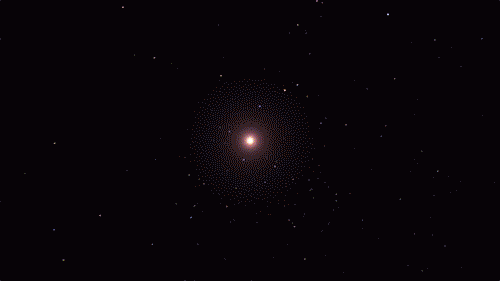
The building blocks for humans, and even our planet, wouldn’t exist if it weren’t for stars. If we could rewind the universe back almost to the very beginning, we would just see a sea of hydrogen, helium, and a tiny bit of lithium.
The first generation of stars formed from this material. There’s so much heat and pressure in a star’s core that they can fuse atoms together, forming new elements. Our DNA is made up of carbon, hydrogen, oxygen, nitrogen, and phosphorus. All those elements (except hydrogen, which has existed since shortly after the big bang) are made by stars and released into the cosmos when the stars die.

Each star comes with a limited fuel supply. When a medium-mass star runs out of fuel, it will swell up and shrug off its outer layers. Only a small, hot core called a white dwarf is left behind. The star’s cast-off debris includes elements like carbon and nitrogen. It expands out into the cosmos, possibly destined to be recycled into later generations of stars and planets. New life may be born from the ashes of stars.
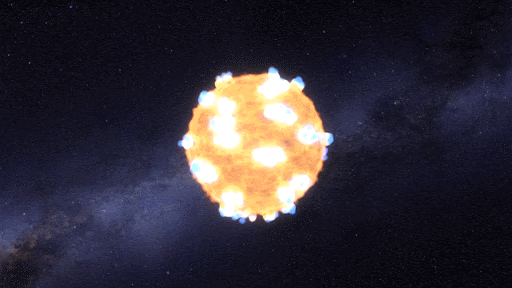
Massive stars are doomed to a more violent fate. For most of their lives, stars are balanced between the outward pressure created by nuclear fusion and the inward pull of gravity. When a massive star runs out of fuel and its nuclear processes die down, it completely throws the star out of balance. The result? An explosion!
Supernova explosions create such intense conditions that even more elements can form. The oxygen we breathe and essential minerals like magnesium and potassium are flung into space by these supernovas.
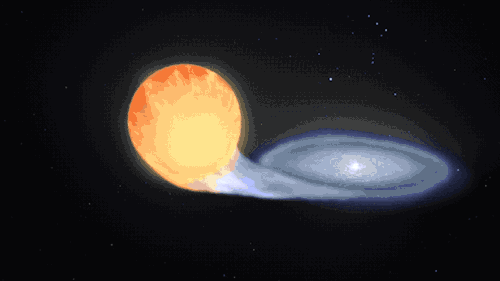
Supernovas can also occur another way in binary, or double-star, systems. When a white dwarf steals material from its companion, it can throw everything off balance too and lead to another kind of cataclysmic supernova. Our Nancy Grace Roman Space Telescope will study these stellar explosions to figure out what’s speeding up the universe’s expansion.
This kind of explosion creates calcium – the mineral we need most in our bodies – and trace minerals that we only need a little of, like zinc and manganese. It also produces iron, which is found in our blood and also makes up the bulk of our planet’s mass!

A supernova will either leave behind a black hole or a neutron star – the superdense core of an exploded star. When two neutron stars collide, it showers the cosmos in elements like silver, gold, iodine, uranium, and plutonium.

Some elements only come from stars indirectly. Cosmic rays are nuclei (the central parts of atoms) that have been boosted to high speed by the most energetic events in the universe. When they collide with atoms, the impact can break them apart, forming simpler elements. That’s how we get boron and beryllium – from breaking star-made atoms into smaller ones.
Half a dozen other elements are created by radioactive decay. Some elements are radioactive, which means their nuclei are unstable. They naturally break down to form simpler elements by emitting radiation and particles. That’s how we get elements like radium. The rest are made by humans in labs by slamming atoms of lighter elements together at super high speeds to form heavier ones. We can fuse together elements made by stars to create exotic, short-lived elements like seaborgium and einsteinium.
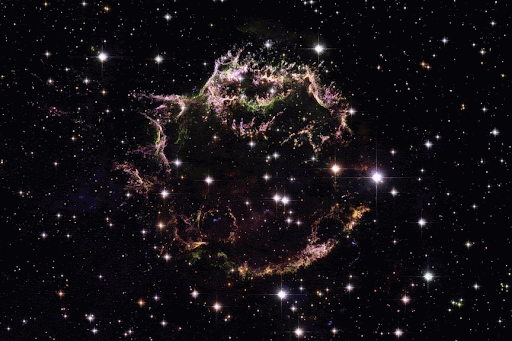
From some of the most cataclysmic events in the cosmos comes all of the beauty we see here on Earth. Life, and even our planet, wouldn’t have formed without them! But we still have lots of questions about these stellar factories.
In 2006, our Stardust spacecraft returned to Earth containing tiny particles of interstellar dust that originated in distant stars, light-years away – the first star dust to ever be collected from space and returned for study. You can help us identify and study the composition of these tiny, elusive particles through our Stardust@Home Citizen Science project.
Our upcoming Roman Space Telescope will help us learn more about how elements were created and distributed throughout galaxies, all while exploring many other cosmic questions. Learn more about the exciting science this mission will investigate on Twitter and Facebook.
Make sure to follow us on Tumblr for your regular dose of space!
More Posts from Nasa and Others
How Well Do You Know Mercury?
Mercury is the smallest planet in our solar system and is only slightly larger than Earth’s moon. To give you some perspective, if the sun were as tall as a typical front door, Earth would be the size of a nickel and Mercury would be about as big as a green pea.

Mercury is the closest planet to the sun. Daytime temperatures can reach 430 degrees Celsius (800 degrees Fahrenheit) and drop to –180 degrees Celsius (-290 degrees Fahrenheit) at night.
Here are a few fun facts about Mercury:
Mercury takes only 88 Earth days to orbit the sun
If we could stand on Mercury’s surface when it is at its closest point to the sun, the sun would appear more than three times larger than it does here on Earth
Mercury is home to one of the largest impact basins in the solar system: the Caloris Basin. The diameter of this impact basin is the length of 16,404 football fields (minus the end zones) placed end to end!
Mercury is one of only two planets in our solar system that do not have moons (Venus is the other one)
Mercury completes three rotations for every two orbits around the sun. That means that if you wanted to stay up from sunrise to sunrise on Mercury, you’d be up for 176 Earth days…you’d need a LOT of coffee!

Two missions have visited Mercury:
Mariner 10 was the first mission to Mercury, and 30 years later, our MESSENGER mission was the second to visit the planet. Mariner 10 was also the first spacecraft to reach one planet by using the gravity of another planet (in this case, Venus) to alter its speed and trajectory.

MESSENGER was the first spacecraft to orbit Mercury, The spacecraft had its own shades to protect it from the light of the sun. This is important since sunlight on Mercury can be as much as 11 times brighter than it is here on Earth. The spacecraft was originally planned to orbit Mercury for one year, but exceeded expectations and worked for over four years capturing extensive data. On April 30, 2015, the spacecraft succumbed to the pull of solar gravity and impacted Mercury’s surface.
Water Ice?
The MESSENGER spacecraft observed compelling support for the long-held hypothesis that Mercury harbors abundant water ice and other frozen volatile materials in its permanently shadowed polar craters.

This radar image of Mercury’s north polar region. The areas shown in red were captured by MESSENGER, compared to the yellow deposits imaged by Earth-based radar. These areas are believed to consist of water ice.
Mercury Transit of the Sun
For more than seven hours on Monday, May 9, Mercury will be visible as a tiny black dot crossing the face of the sun. This rare event – which happens only slightly more than once a decade – is called a transit.

Where: Skywatchers in Western Europe, South America and eastern North America will be able to see the entirety of the transit. The entire 7.5-hour path across the sun will be visible across the Eastern U.S. – with magnification and proper solar filters – while those in the West can observe the transit in progress at sunrise.

Watch: We will stream a live program on NASA TV and the agency’s Facebook page from 10:30 to 11:30 a.m. – an informal roundtable during which experts representing planetary, heliophysics and astrophysics will discuss the science behind the Mercury transit. Viewers can ask questions via Facebook and Twitter using #AskNASA. Unlike the 2012 Venus transit of the sun, Mercury is too small to be visible without magnification from a telescope or high-powered binoculars. Both must have safe solar filters made of specially-coated glass or Mylar; you can never look directly at the sun.
To learn more about our solar system and the planets, visit: http://solarsystem.nasa.gov/
Make sure to follow us on Tumblr for your regular dose of space: http://nasa.tumblr.com
How are decisions made about what experiments are sent into space? Are there certain kinds of experiments that NASA wants to conduct every time cargo is launched to the ISS, or are there occasionally experiments that are duplicated for more observation and data collection?
What's a Question you wish someone would ask?
Watch a Launch From Your Own Backyard
On Monday, Oct. 17, we’re launching cargo to the International Space Station, and if you live on the east coast, there’s a chance you can catch a glimpse!

The above map shows the areas on the east coast where launch may be visible, depending on cloud conditions.
Liftoff is currently scheduled for 7:40 p.m. EDT from our Wallops Flight Facility in Virginia.
The launch of Orbital ATK’s Cygnus spacecraft will carry around 5,100 pounds of supplies and research materials to the crew on the space station.
Not in the launch viewing area? No worries! Full launch coverage will be available starting at 6:45 p.m. EDT HERE.
Make sure to follow us on Tumblr for your regular dose of space: http://nasa.tumblr.com
What are the Universe’s Most Powerful Particle Accelerators?
Every second, every square meter of Earth’s atmosphere is pelted by thousands of high-energy particles traveling at nearly the speed of light. These zippy little assailants are called cosmic rays, and they’ve been puzzling scientists since they were first discovered in the early 1900s. One of the Fermi Gamma-ray Space Telescope’s top priority missions has been to figure out where they come from.

“Cosmic ray” is a bit of a misnomer. Makes you think they’re light, right? But they aren’t light at all! They’re particles that mostly come from outside our solar system — which means they're some of the only interstellar matter we can study — although the Sun also produces some. Cosmic rays hit our atmosphere and break down into secondary cosmic rays, most of which disperse quickly in the atmosphere, although a few do make it to Earth’s surface.
Cosmic rays aren't dangerous to those of us who spend our lives within Earth's atmosphere. But if you spend a lot of time in orbit or are thinking about traveling to Mars, you need to plan how to protect yourself from the radiation caused by cosmic rays.

Cosmic rays are subatomic particles — smaller particles that make up atoms. Most of them (99%) are nuclei of atoms like hydrogen and helium stripped of their electrons. The other 1% are lone electrons. When cosmic rays run into molecules in our atmosphere, they produce secondary cosmic rays, which include even lighter subatomic particles.

Most cosmic rays reach the same amount of energy a small particle accelerator could produce. But some zoom through the cosmos at energies 40 million times higher than particles created by the world’s most powerful man-made accelerator, the Large Hadron Collider. (Lightning is also a pretty good particle accelerator).

So where do cosmic rays come from? We should just be able to track them back to their source, right? Not exactly. Any time they run into a strong magnetic field on their way to Earth, they get deflected and bounce around like a game of cosmic pinball. So there’s no straight line to follow back to the source. Most of the cosmic rays from a single source don’t even make it to Earth for us to measure. They shoot off in a different direction while they’re pin balling.

Photo courtesy of Argonne National Laboratory
In 1949 Enrico Fermi — an Italian-American physicist, pioneer of high-energy physics and Fermi satellite namesake — suggested that cosmic rays might accelerate to their incredible speeds by ricocheting around inside the magnetic fields of interstellar gas clouds. And in 2013, the Fermi satellite showed that the expanding clouds of dust and gas produced by supernovas are a source of cosmic rays.

When a star explodes in a supernova, it produces a shock wave and rapidly expanding debris. Particles trapped by the supernova remnant magnetic field bounce around wildly.

Every now and then, they cross the shock wave and their energy ratchets up another notch. Eventually they become energetic enough to break free of the magnetic field and zip across space at nearly the speed of light — some of the fastest-traveling matter in the universe.

How can we track them back to supernovas when they don’t travel in a straight line, you ask? Very good question! We use something that does travel in a straight line — gamma rays (actual rays of light this time, on the more energetic end of the electromagnetic spectrum).
When the particles get across the shock wave, they interact with non-cosmic-ray particles in clouds of interstellar gas. Cosmic ray electrons produce gamma rays when they pass close to an atomic nucleus. Cosmic ray protons, on the other hand, produce gamma rays when they run into normal protons and produce another particle called a pion (Just hold on! We’re almost there!) which breaks down into two gamma rays.

The proton- and electron-produced gamma rays are slightly different. Fermi data taken over four years showed that most of the gamma rays coming from some supernova remnants have the energy signatures of cosmic ray protons knocking into normal protons. That means supernova remnants really are powerful particle accelerators, creating a lot of the cosmic rays that we see!
There are still other cosmic ray sources on the table — like active galactic nuclei — and Fermi continues to look for them. Learn more about what Fermi’s discovered over the last 10 years and how we’re celebrating its accomplishments.
Make sure to follow us on Tumblr for your regular dose of space: http://nasa.tumblr.com.
Bringing The Space Station Perspective to Earth in VR!
Only a few humans ever get to experience the awe-inspiring vantage point provided by the space station, but a new virtual reality (VR) experience, Space Explorers: The ISS Experience (ISS Experience), attempts to bring this perspective back to Earth for the rest of us.

Partnering with the ISS National Lab and Time, a team from Felix and Paul Studios launched a high quality 360 degree camera to space to help tell the story of science and life aboard the orbiting laboratory.

The project, currently in the process of being filmed by the station astronauts themselves, serves as an outreach project as well a technology demonstration, testing the limits of filming in the harsh environment of space.

The camera flew to the station on 16th SpaceX commercial resupply services mission in December 2018 along with a number of other scientific experiments.

Since then, the team has recorded many moments, including the SPHERES robots flying around the station (see below) , the growing and harvesting of vegetables, jam session among the astronauts, crew meals and the arrival of new astronauts.

So far, the footage coming back seems to be achieving the goal of immersing audiences in science and life aboard the space station. NASA astronaut Sunita Williams got the chance to watch some of the initial footage and says it was like I was back on the station.

While most of the filming has been completed, the biggest technical challenge is yet to come: capturing a spacewalk in virtual reality. The team expects to launch a new camera for spacewalk filming and begin production of spacewalk filming in 2020.

Learn more about ISS Experience here.
For daily updates, follow @ISS_Research on Twitter, Space Station Research and Technology News or our Facebook. Follow the ISS National Lab for information on its sponsored investigations. For opportunities to see the space station pass over your town, check out Spot the Station.
Make sure to follow us on Tumblr for your regular dose of space: http://nasa.tumblr.com.
So you want to work at NASA?
An out of this world career or internship might not be as far out of reach as you think. Check out all the ways you can get involved!
If you’re a student…

Our internships are the perfect place to start! We offer paid internships for spring, summer, and fall semesters to U.S. citizens currently attending an accredited university full time. Learn more at: https://intern.nasa.gov
Seriously considering a job in the Federal civil service? Check out the Pathways Internship Program which allows you to do multiple work tours while you finish school: http://nasajobs.nasa.gov/studentopps/employment/iep.htm
If you’re a recent graduate…
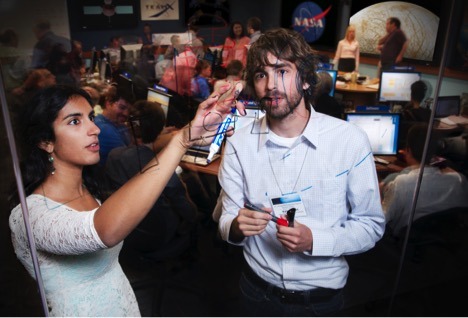
If you’re a U.S. citizen who has graduated from an accredited college or university within the past 2 years (or 6 if you have served in the military), then the our Recent Graduates program is just for you. Accepted applicants are placed in a 1 year career development program with the possibility of an additional year, or even granted term or permanent jobs within the agency. Learn more at: http://nasajobs.nasa.gov/studentopps/employment/rgp.htm.
If you’re a professional…

You can search for our job openings any time at USAJobs.com. Create an account, then use the USAJobs resume builder. Want to make sure your resume maximizes your opportunity for a job at NASA? Check out our Applicant Guide: https://applyonline.nasa.gov/applicant_guide.html.
You can then search for our job openings here: https://nasai.usajobs.gov/.
If you want to be an astronaut…

Astronaut candidate applications are accepted every few years- including right now! Get yours in before the current application closes on February 18, 2016.
Do you have a bachelor’s degree in a STEM field and 3 years of related professional experience? You might be eligible. Find out more and apply online at: https://nasai.usajobs.gov/GetJob/ViewDetails/423817000.
Make sure to follow us on Tumblr for your regular dose of space: http://nasa.tumblr.com
Five Ways Your Holidays Might Be Similar to the Crew on the Space Station
The holiday season is here! You might think that your celebrations are WAY different than what is done on the International Space Station, but you might be surprised…Here are a few ways your holidays might be similar to the crew on the space station:
1. You’re Instagramming All Your Decorations

Yep! Just like on Earth, the space station crew has the capability to use social media while on orbit. If you don’t follow them, you should check it out and get an out of this world perspective of what life is like on the International Space Station. (Expedition 34 crew members assemble in the Unity node of the space station for a brief celebration of the Christmas holiday on Dec. 24, 2012.)
2. You Have to Make Sure to Call Your Relatives

You don’t want to forget to wish Aunt Sue “Happy Holidays”, she might not send you a gift next year! The crew on the space station have the ability to talk to their loved ones every day. (Cosmonaut Mikhail Tyurin, and astronauts Michael E. Lopez-Alegria and Sunita L. Williams conduct a teleconference on Dec. 25, 2006.)
3. The Family Photos Never Seem to End

The crew on the station might not be related by blood, or even country of birth, but they share living space, meals and time together just like a family on Earth. And when it comes to the holidays, you bet they’ll be snapping pictures to capture the moments. (The six Expedition 30 crew members assemble in the U.S. Lab aboard the space station for a brief celebration of the Christmas holiday on Dec. 25, 2011.)
4. Meal Prep is a Task Shared by All

When you’re making food for multiple people, everyone needs to pitch in and help…the crew on the space station included! (Astronauts Michael Fincke, Sandra Magnus and cosmonaut Yury Lonchakov, pose for a photo as they prepare to share a Christmas meal on the space station on Dec. 25, 2008.)
5. Eating Cookies is a Must

What would the holidays be like without eating cookies? They even have the chance to eat them in space…pretty cool! (Astronauts Michael Fincke and Sandra Magnus hold Christmas cookies while posing for a photo near the galley on the space station on Dec. 25, 2008.)
For more pictures from the holidays on the International Space Station, check out our Flickr album: HERE.
Make sure to follow us on Tumblr for your regular dose of space: http://nasa.tumblr.com
Vice President Mike Pence visited our Kennedy Space Center in Florida today. While there, he delivered remarks to the workforce and toured our complex to see progress toward sending humans deeper into space, and eventually to Mars. He also had the opportunity to see our work with commercial companies to launch humans from U.S. soil to the International Space Station.
-
 kayayayayayayay liked this · 3 weeks ago
kayayayayayayay liked this · 3 weeks ago -
 yeehawdimus liked this · 1 month ago
yeehawdimus liked this · 1 month ago -
 bobby76love reblogged this · 2 months ago
bobby76love reblogged this · 2 months ago -
 davinamikaelsonalwaysandforever liked this · 3 months ago
davinamikaelsonalwaysandforever liked this · 3 months ago -
 amity297 liked this · 3 months ago
amity297 liked this · 3 months ago -
 valiantsuitfury liked this · 3 months ago
valiantsuitfury liked this · 3 months ago -
 insertanepicusername liked this · 3 months ago
insertanepicusername liked this · 3 months ago -
 cosmicjester6 liked this · 3 months ago
cosmicjester6 liked this · 3 months ago -
 happybatshoeapricot liked this · 5 months ago
happybatshoeapricot liked this · 5 months ago -
 venusianguy reblogged this · 5 months ago
venusianguy reblogged this · 5 months ago -
 faithfuldissident reblogged this · 5 months ago
faithfuldissident reblogged this · 5 months ago -
 glutiamentous liked this · 6 months ago
glutiamentous liked this · 6 months ago -
 emaadsidiki liked this · 6 months ago
emaadsidiki liked this · 6 months ago -
 instantpandadefendor liked this · 6 months ago
instantpandadefendor liked this · 6 months ago -
 emstargazer reblogged this · 7 months ago
emstargazer reblogged this · 7 months ago -
 emstargazer liked this · 7 months ago
emstargazer liked this · 7 months ago -
 superjinaaaa reblogged this · 7 months ago
superjinaaaa reblogged this · 7 months ago -
 superjinaaaa liked this · 7 months ago
superjinaaaa liked this · 7 months ago -
 what-the-hell-is-going-on-here reblogged this · 7 months ago
what-the-hell-is-going-on-here reblogged this · 7 months ago -
 dobyina liked this · 9 months ago
dobyina liked this · 9 months ago -
 ruththe-reckless reblogged this · 9 months ago
ruththe-reckless reblogged this · 9 months ago -
 pleasantinfluencerrebel reblogged this · 9 months ago
pleasantinfluencerrebel reblogged this · 9 months ago -
 beyourselfchulanmaria reblogged this · 9 months ago
beyourselfchulanmaria reblogged this · 9 months ago -
 panfriedgarlicbread reblogged this · 10 months ago
panfriedgarlicbread reblogged this · 10 months ago -
 4thethingsilike reblogged this · 10 months ago
4thethingsilike reblogged this · 10 months ago -
 4thethingsilike reblogged this · 10 months ago
4thethingsilike reblogged this · 10 months ago -
 not-shitposting-iswear liked this · 10 months ago
not-shitposting-iswear liked this · 10 months ago -
 silverprimal liked this · 11 months ago
silverprimal liked this · 11 months ago -
 looookingup reblogged this · 11 months ago
looookingup reblogged this · 11 months ago -
 misskohane liked this · 11 months ago
misskohane liked this · 11 months ago -
 bboogeyman reblogged this · 11 months ago
bboogeyman reblogged this · 11 months ago -
 thealicedoll liked this · 11 months ago
thealicedoll liked this · 11 months ago -
 starsidexiv liked this · 11 months ago
starsidexiv liked this · 11 months ago -
 guthearse reblogged this · 11 months ago
guthearse reblogged this · 11 months ago -
 lululumune liked this · 1 year ago
lululumune liked this · 1 year ago -
 blog-dylan liked this · 1 year ago
blog-dylan liked this · 1 year ago -
 happymeishappylife reblogged this · 1 year ago
happymeishappylife reblogged this · 1 year ago -
 whitestnoise reblogged this · 1 year ago
whitestnoise reblogged this · 1 year ago -
 rituals-in-starlight liked this · 1 year ago
rituals-in-starlight liked this · 1 year ago -
 irllka liked this · 1 year ago
irllka liked this · 1 year ago -
 uwubarca reblogged this · 1 year ago
uwubarca reblogged this · 1 year ago
Explore the universe and discover our home planet with the official NASA Tumblr account
1K posts